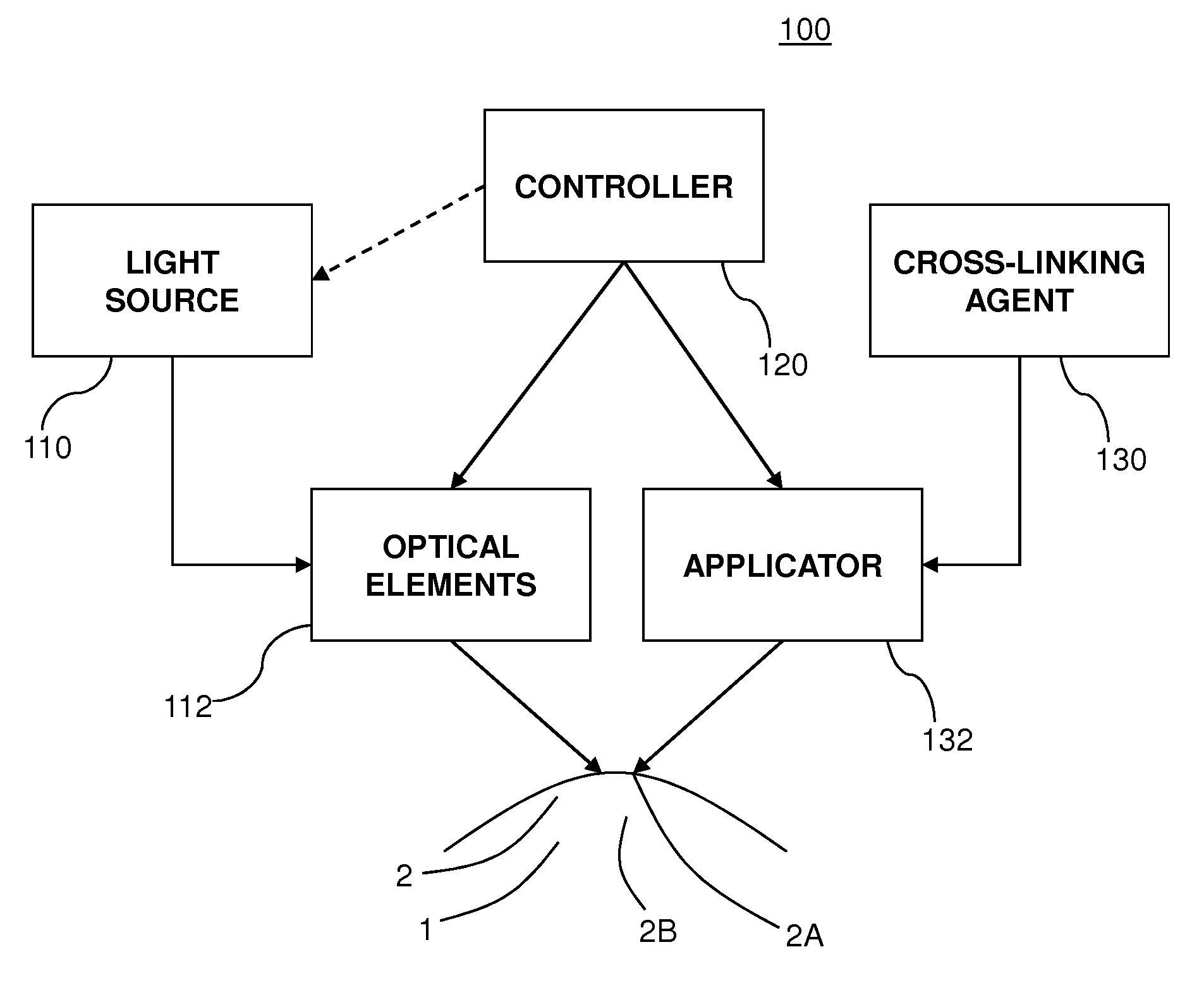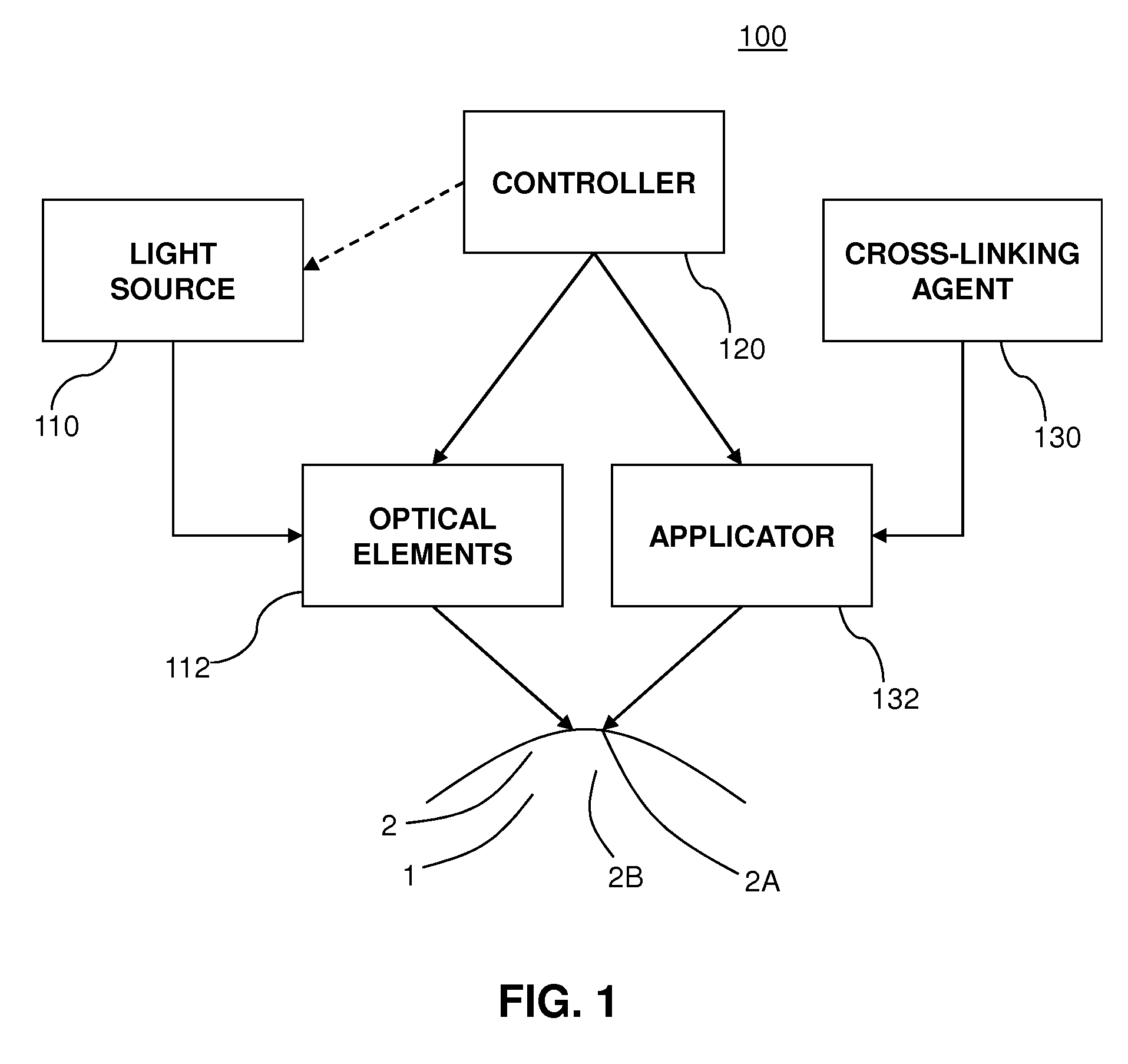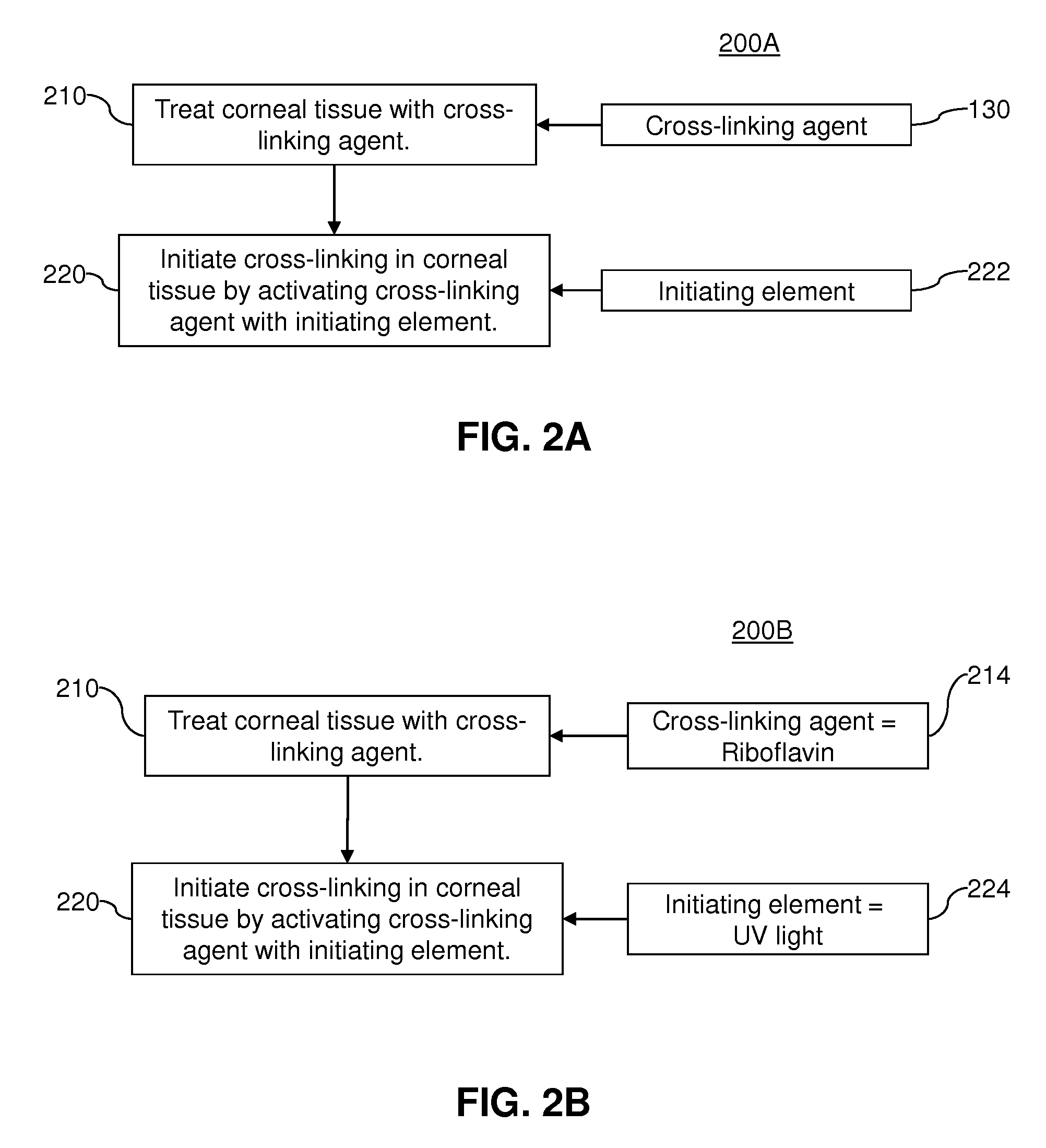Sterilizing application of cross-linking agent
a cross-linking agent and sterile technology, applied in the field of medical treatment, can solve the problems of increasing the risk of infection, compromising the protective function of the epithelium, etc., and achieve the effect of reducing the risk of infection
- Summary
- Abstract
- Description
- Claims
- Application Information
AI Technical Summary
Benefits of technology
Problems solved by technology
Method used
Image
Examples
Embodiment Construction
[0023]According to aspects of the present disclosure, a cross-linking agent is applied to the regions of the cornea treated by LASIK surgery, or other similar eye treatment. According to some embodiments, the cross-linking agent is applied to initiate molecular cross-linking of corneal collagen to stabilize corneal tissue and improve its biomechanical strength when LASIK surgery is employed to make corrections to corneal structure and shape. According to other embodiments, the cross-linking agent is applied to sterilize the field for LASIK surgery and reduce the risk of infection associated with penetration of the outer protective layer, e.g., epithelium, of the eye.
[0024]FIG. 1 provides a block diagram of an example delivery system 100 for delivering a cross-linking agent 130 and an initiating element, e.g., light, to a cornea 2 of an eye 1 in order to initiate molecular cross-linking of corneal collagen within the cornea 2. Cross-linking can stabilize corneal tissue and improve it...
PUM
 Login to View More
Login to View More Abstract
Description
Claims
Application Information
 Login to View More
Login to View More - R&D
- Intellectual Property
- Life Sciences
- Materials
- Tech Scout
- Unparalleled Data Quality
- Higher Quality Content
- 60% Fewer Hallucinations
Browse by: Latest US Patents, China's latest patents, Technical Efficacy Thesaurus, Application Domain, Technology Topic, Popular Technical Reports.
© 2025 PatSnap. All rights reserved.Legal|Privacy policy|Modern Slavery Act Transparency Statement|Sitemap|About US| Contact US: help@patsnap.com



